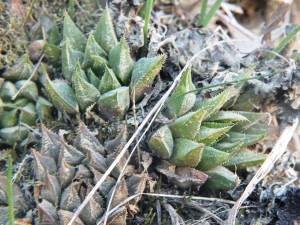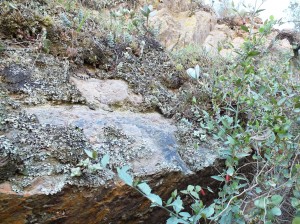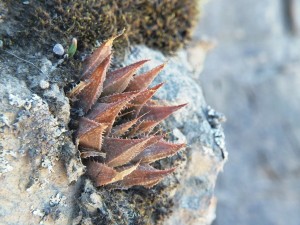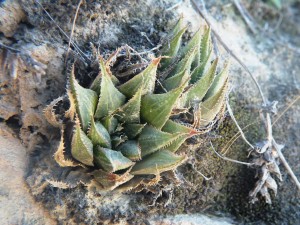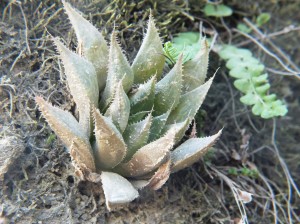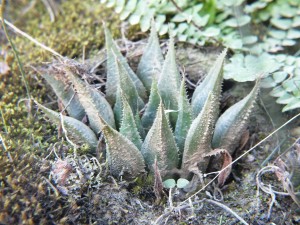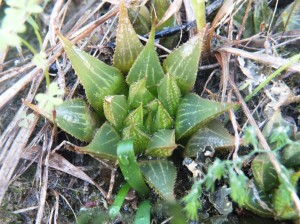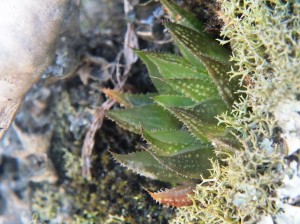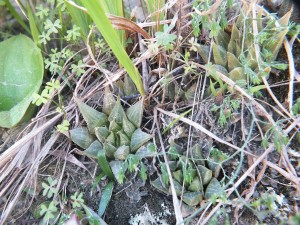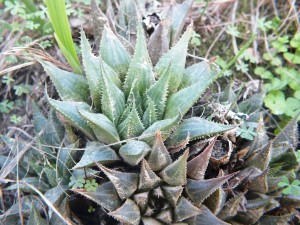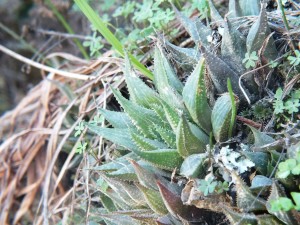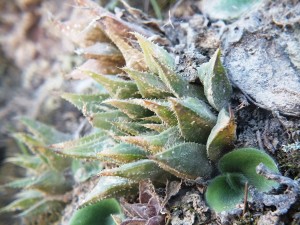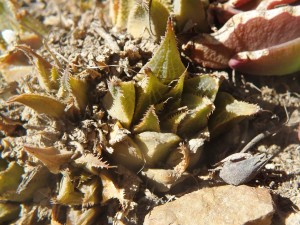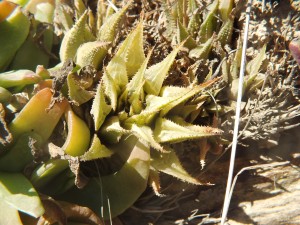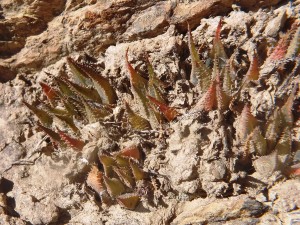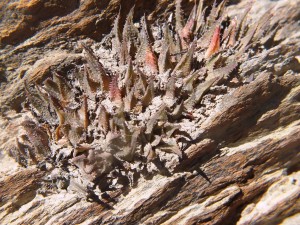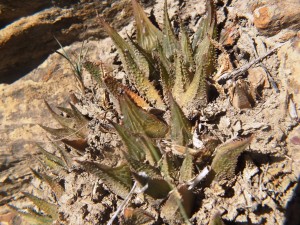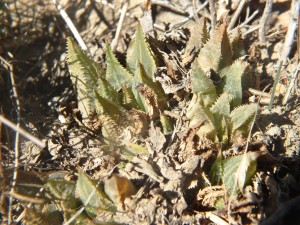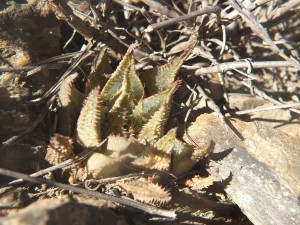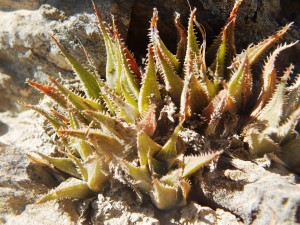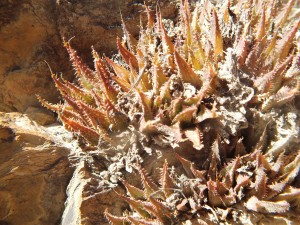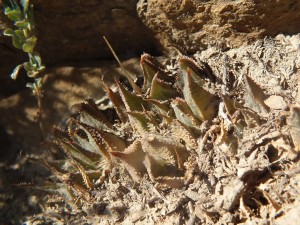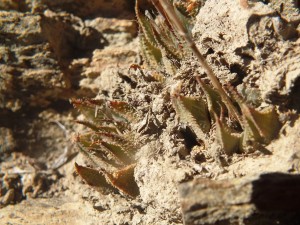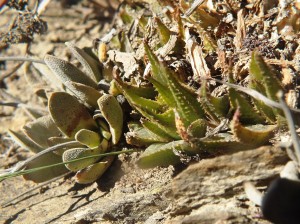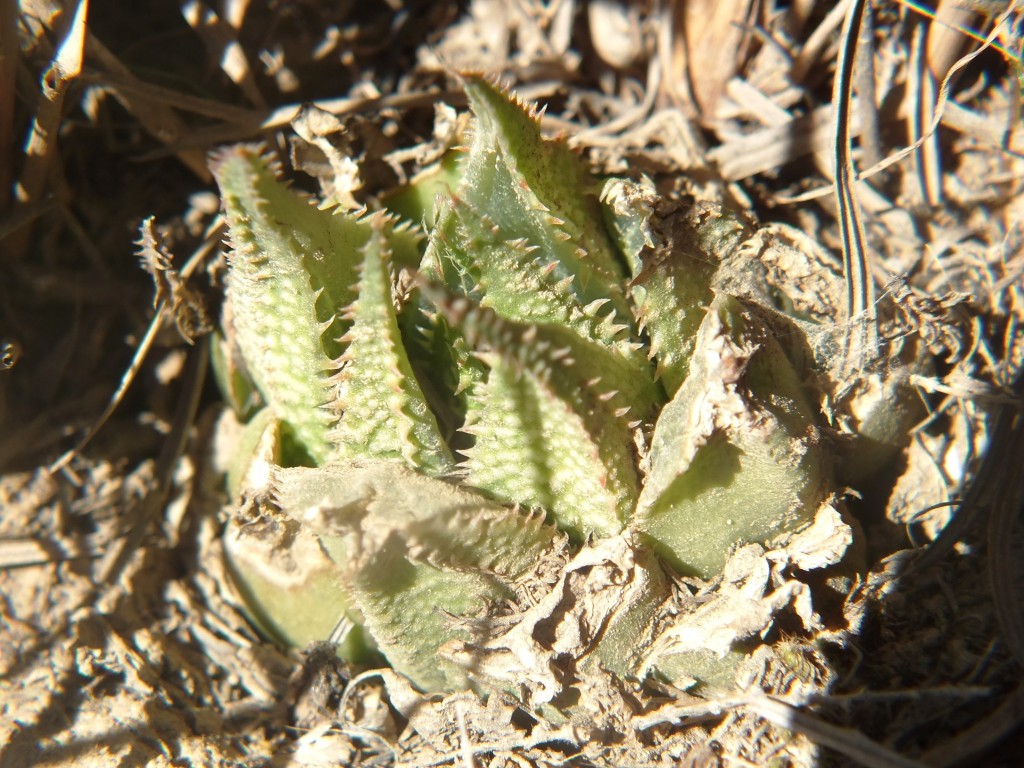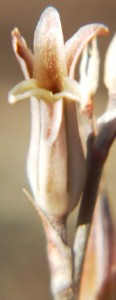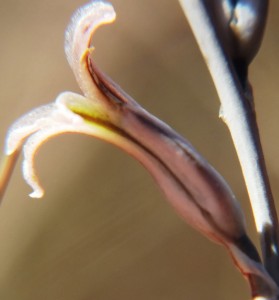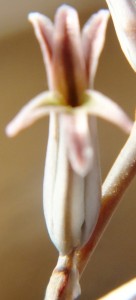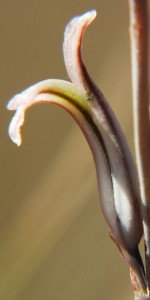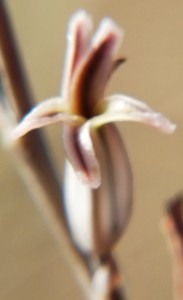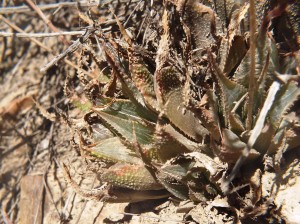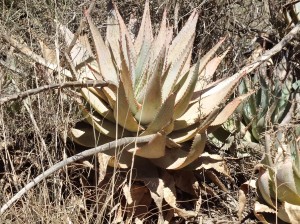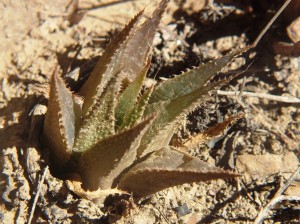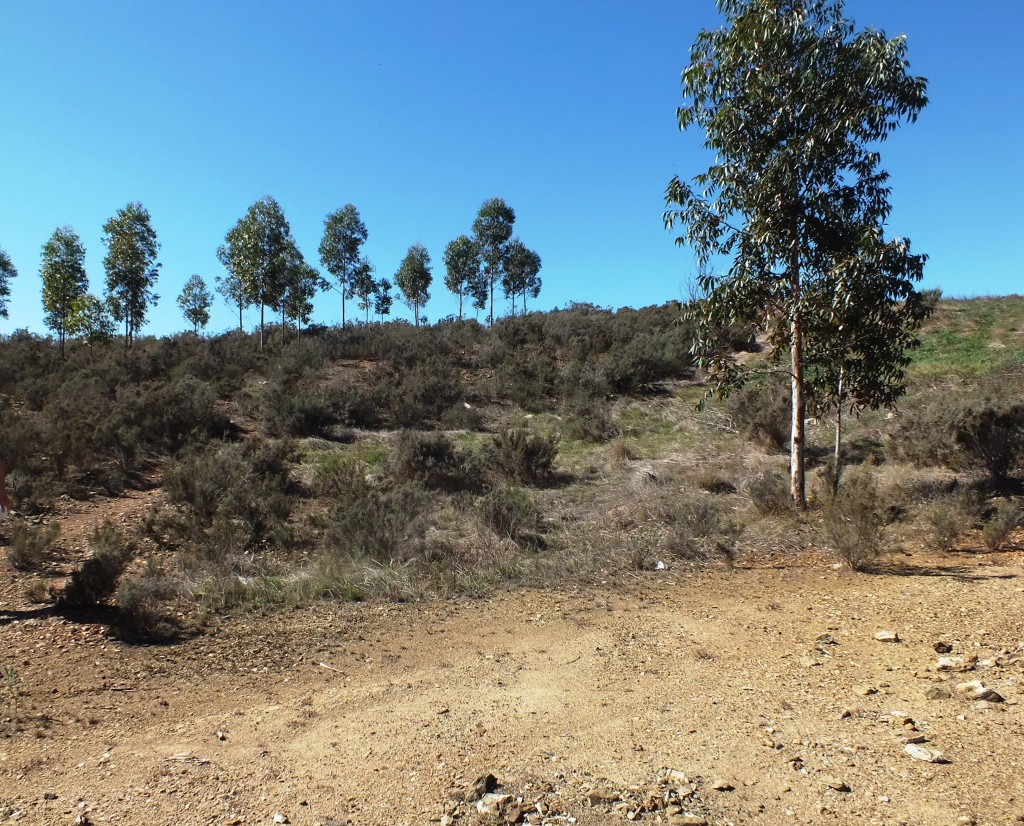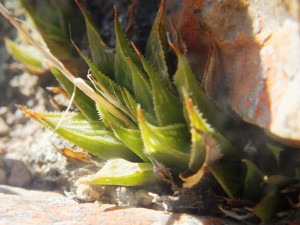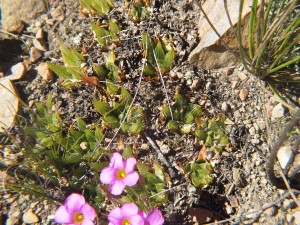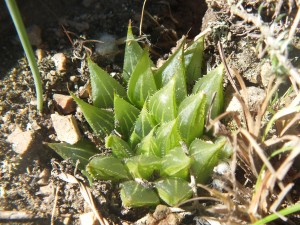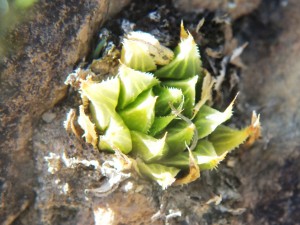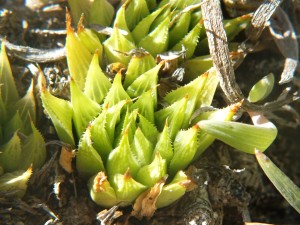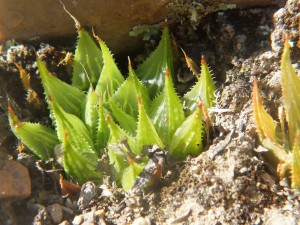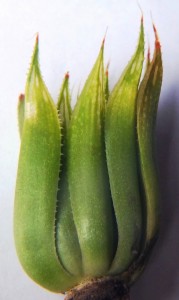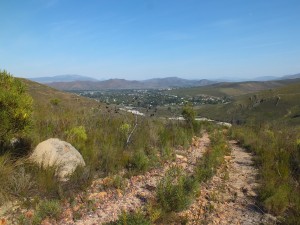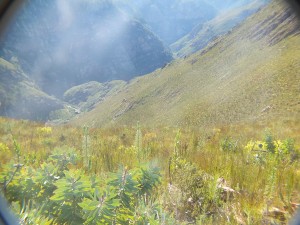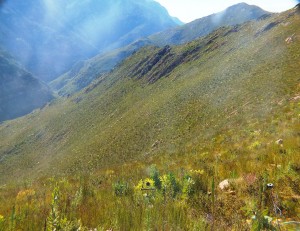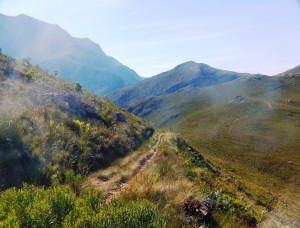Appendix 11 to Haworthia Update Vol. 8.
In appendix 6 I reported on H. mirabilis just east of Greyton and also at Schuitsberg further east and south. I undertook this excursion to fill out on a population at Uitkyk (MBB7092) west of Genadendal illustrated with one image in Haworthia Revisited. En route we discovered still another population along a road from Caledon to the northwest (8055 Hammanskraal), briefly called at a site east of the bridge on that road crossing the Riviersonderend (MBB8056). We also visited the population MBB8040 east of Greyton and explored some of the hiking trail between Greyton and McGregor.
The population 7092, H. mirabilis, at Uitkyk, is indeed interesting. It is a steep riverside, south facing, vertical slope. There are many plants that may not receive any direct sunshine for most of the summer and of course none in winter. It is really curious because there are groups of plants that seem to be holding clumps of moss, lichen and a modicum of soil to the rock. There are orchids, oxalis, shade-loving Asparagus, and all the small bulbs one expects in these moist south facing habitats. The rock seems to be metamorphosed from fault-shearing heat and pressure on shale. Among the illustrations is a view looking east along the road with the roadside south-facing habitat on the left. The Riviersonderend River is immediately on the right. In the distance ahead is Leeukop, the type locality for H. mirabilis ‘rubrodentata’. That is a dry north-facing slope.
The 8055 Hammanskraal population is about 5km due south of Leeukop and is quite new to me. We were attracted in passing to a very promising looking northwest facing shale ridge and were not surprised to find plants there. However, it does consolidate the western limits of the species. A paradox is that here the plants seem to be only in little pockets of soil in the shale ridges. There are none in the more friable and developed soil between the exposed unweathered shale. The plants were in seed and there were still a few flowers indicative of a flowering time a good two months behind populations to the north and east. The plant 8055.17 could very easily be mistaken for similar clones in populations northwest of Napier (‘subtuberculata’).
8056 is a population that Kobus Venter drew my attention to. We only looked along the road and did not spend much time there. This is similar habitat to Leeukop where the var. rubrodentata originated. That original description and name is associated with a variant with relatively long narrow leaves with well developed and very red spination. Of course the colour is associated with the northern aspect. Red spination is quite common elsewhere in H. mirabilis and is evident on the 8055 plants too. I include a view of a nearby site as evidence of road building vandalism. For some reason or other the road builders seem to have thought it necessary to scrape and ravage a wide strip of countryside between where the road eventually was established and a wonderful riverside steep slope full of Aloe glauca. It is really curious that there are several aloe populations like this at the H. mirabilis sites, but the two species seem to be exclusive with the Haworthia on the lightly less weathered and more sparsely vegetated area.
We called at the population 8040 east of Greyton because I wanted to obtain a sample to see if the colour was maintained in cultivation. I include a picture 8040.9 to show the offset which has no tubercles, spots, or spines on the underside of the leaves so commonly associated with H. mirabilis. I said of the var consanguinea (southwest of McGregor) that plants could be mistaken for H. mirabilis ‘notabilis’ from Robertson. It is true of this clone too.
The last thing we did was explore the start of the 15kn Boesmansrivier hiking trail from Greyton to McGregor. It is along a traverse through the Riviersonderend Mountains. The Grobos River originates deep in the mountain about 5km southwest of McGregor and runs in a deep gorge toward Greyton. From Greyton the hiking trail voids the deep river valley and ascends a high ridge running parallel to the south of the river. Then there is a second deep valley again south of that. So the path is along the top of a high ridge from where it eventually does drop to a waterfall on the river. We never got that far but I assume the trail then follows the river and then climbs out again at the north eastern end. There were no accessible and likely habitats along the first portion of the trail. We did explore very promising looking habitat south of the trail start, but found nothing. This is curious because it is only about 1km north of the ZigZag path where the plants are abundant. Of course we know that plants occur along the trail northeast of the waterfall and had hoped to chance on suitable accessible habitat on the way there. I have included some pictures of the scenery to show how steep and rugged the terrain is. It is almost certain that there are more populations in the area. Given the adaptation to the Uitkyk habitat contrasted with both Leeukop and Hammanskraal one cannot rule out any possibility of more populations in these mountains. I include a photograph looking southwestwards to show the territory with populations known on those distant ridges both in the extreme west and again extreme east. Plants have been reported in the higher areas. There are also low mountains to the west behind and west of Leeukop unexplored. Hammanskraal would be discernible in the picture in the distance to the far right.
Acknowledgement.
Mr Willie Smal for access to Hammanskraal. My son Warwick for transporting and accompanying us. Kobus Venter for alerting me to the plants east of Leeukop.

